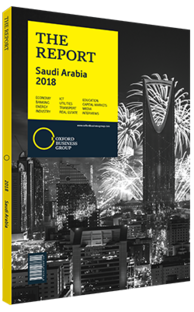Ahmed Al Khateeb, Chairman, Saudi Arabian Military Industries (SAMI): Interview

Interview: Ahmed Al Khateeb
How can the localisation of the defence sector further contribute to the economy?
AHMED AL KHATEEB: The military industries sector is an undeveloped sector of the economy, especially considering that the Kingdom is one of the world’s top five spenders on security and defence. In 2016 military sector expenses constituted 25% of total expenditures. In line with Vision 2030’s overarching goal to diversify Saudi Arabia’s economy, SAMI aims to be the major contributor in localising 50% of Saudi Arabia’s military procurement by 2030, compared to 2% today. In short, we seek to drive an enormous expansion of the domestic defence industries sector. Through the development of SAMI’s supply chain across its four business divisions and investment in strategic and profitable areas, SAMI will generate lasting, positive impacts in both civilian and military sectors, ultimately contributing SR14bn ($3.7bn) to GDP by 2030.
In what ways is investment being prioritised across the spectrum of defence manufacturing?
AL KHATEEB: As part of the development of SAMI, the company undertook a 15-month study into the military-industrial ecosystem of Saudi Arabia, identifying areas of maximum profitability and optimal sectors for localisation. This included – as part of a comprehensive scientific process – the assessment of military and security agencies’ historic and future spending, resulting in the creation of a unique database, the first of its kind for the Kingdom. As a result of these projected requirements, SAMI established four business divisions. These are Aeronautics, Land Systems, Weapons and Missiles, and Defence Electronics.
First, the Aeronautics business division will focus on localising the maintenance, repair and overhaul of fixed-wing aircrafts, as well as manufacturing and maintaining unmanned aerial vehicles. Land Systems will focus on the manufacturing, maintenance, repair and overhaul of military vehicles. The Weapons and Missiles business division will support local manufacturing of medium and heavy weapons, artillery and guided munitions. Lastly, the Defence Electronics business division will focus on the manufacturing and maintenance of radars, communication systems and other types of equipment, as well as cyber.
How can research and development (R&D) and training efforts support local defence industries?
AL KHATEEB: SAMI will have invested around SR6bn ($1.5bn) on R&D and generated 40,000 direct jobs by 2030. These are vital elements to an economy based on sophisticated manufacturing. Our aim is for the company to become a hub for technological innovation, acting as a high-tech employer, sponsoring research and investing in high-quality education for Saudi youth. The company will seek partnerships with top universities, sponsor engineering apprenticeships and foster a culture of career-long learning.
What contracting models are being adopted to incentivise investment in local manufacturing?
AL KHATEEB: SAMI intends to establish more long-term joint ventures with a range of international and domestic original equipment manufacturers (OEMs) as part of our core commercial strategy. This represents a move from a role as customer to one of full partner, and our relationship with OEMs will develop, yielding mutual benefits over the coming years. The company had explored multiple options as part of its 15-month study into how and what represented greater commercial viability. The joint venture model scored the highest rating against SAMI’s criteria of technical capabilities gained, vis-à-vis time required to develop capabilities. The company has already made significant strides in this regard, finalising a series of high profile memoranda of understanding with internationally renowned defence corporations including Boeing, Lockheed Martin, General Dynamics, Raytheon and Rosoboronexport.
You have reached the limit of premium articles you can view for free.
Choose from the options below to purchase print or digital editions of our Reports. You can also purchase a website subscription giving you unlimited access to all of our Reports online for 12 months.
If you have already purchased this Report or have a website subscription, please login to continue.

